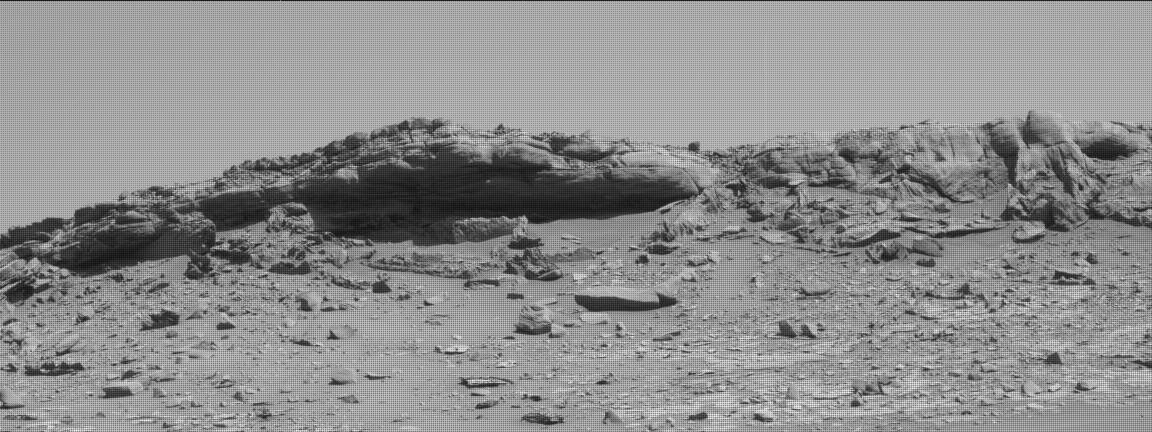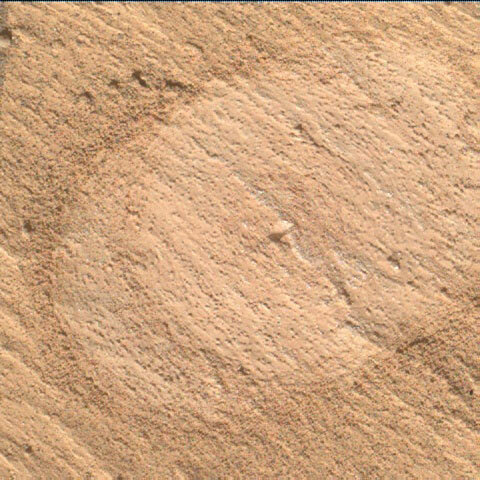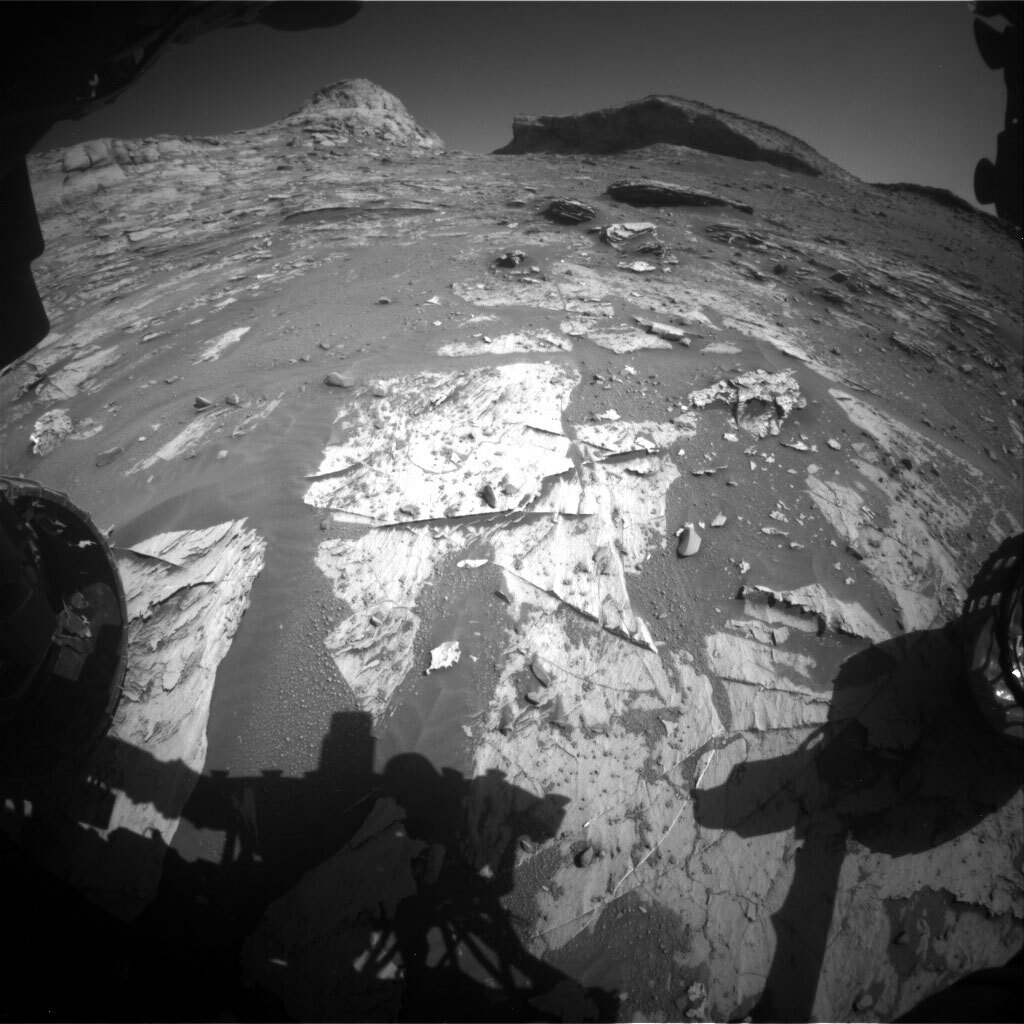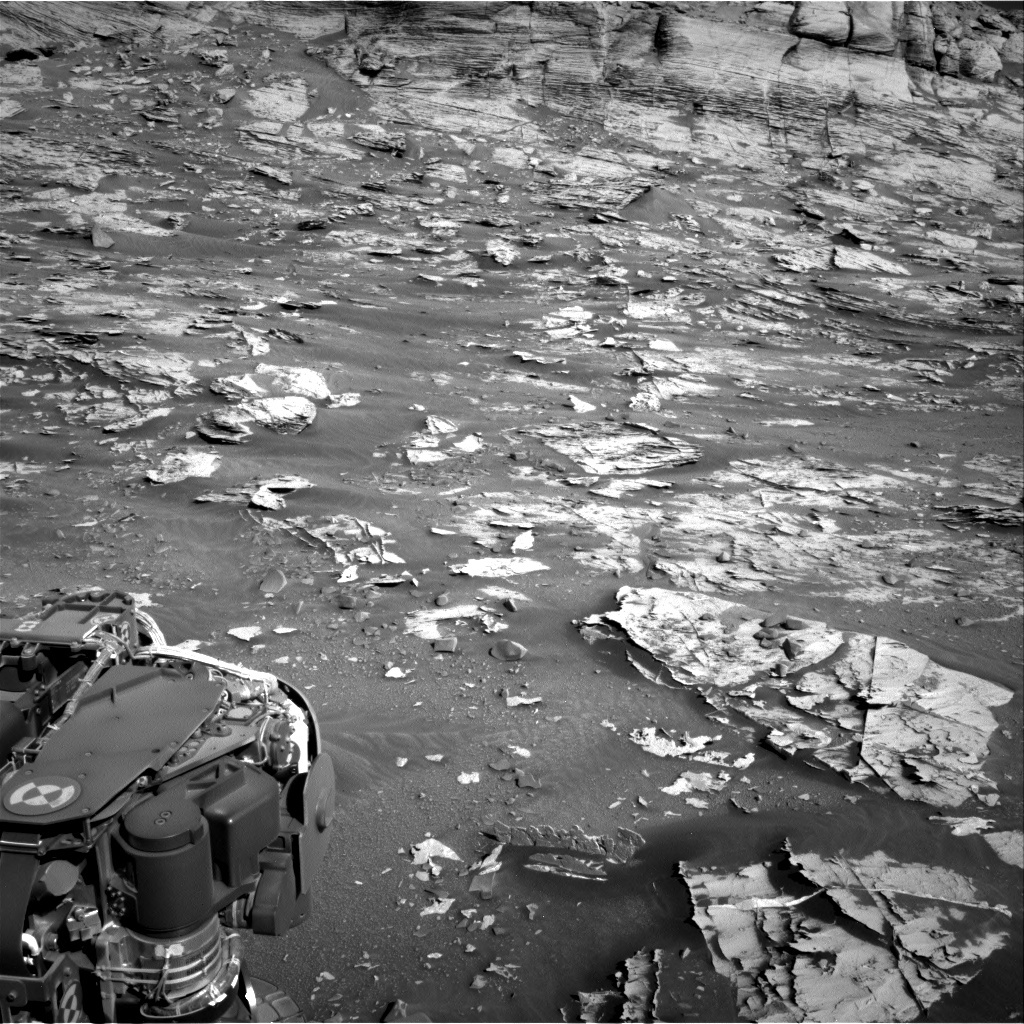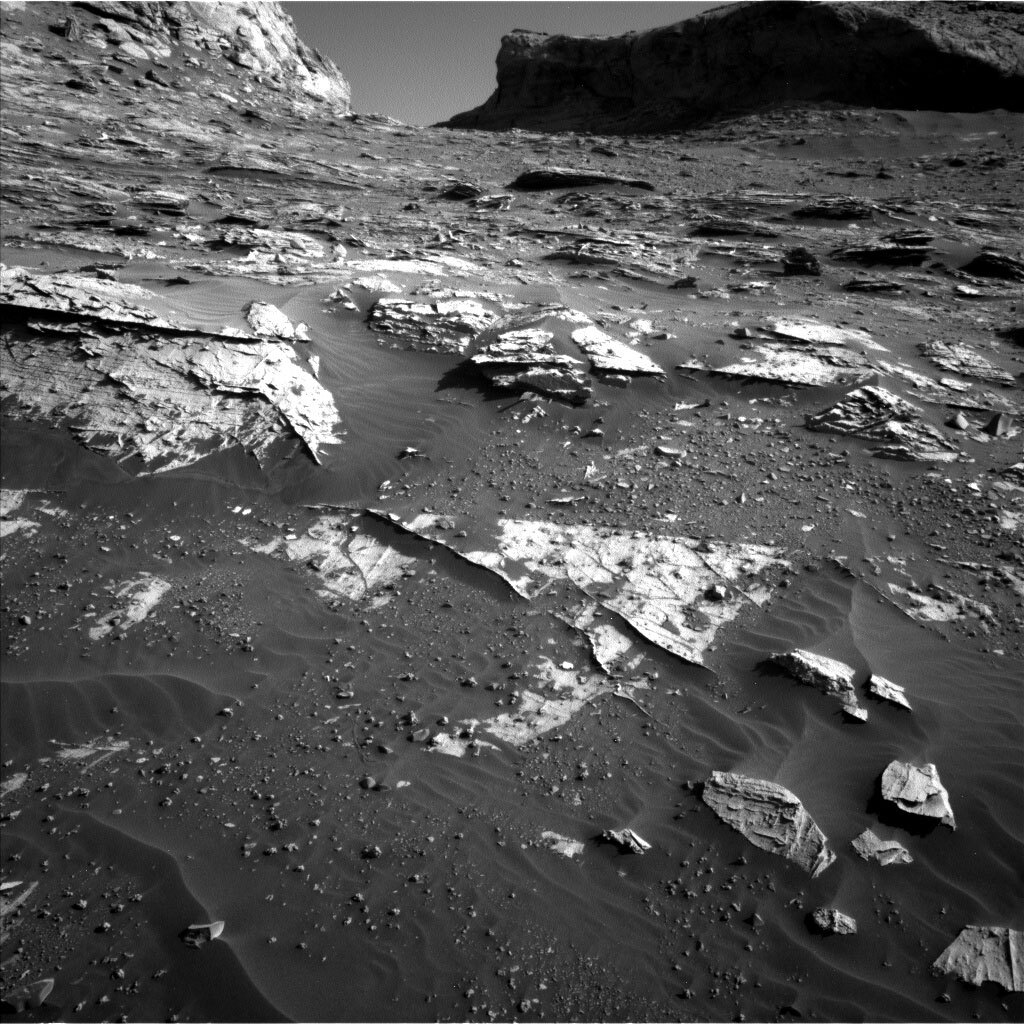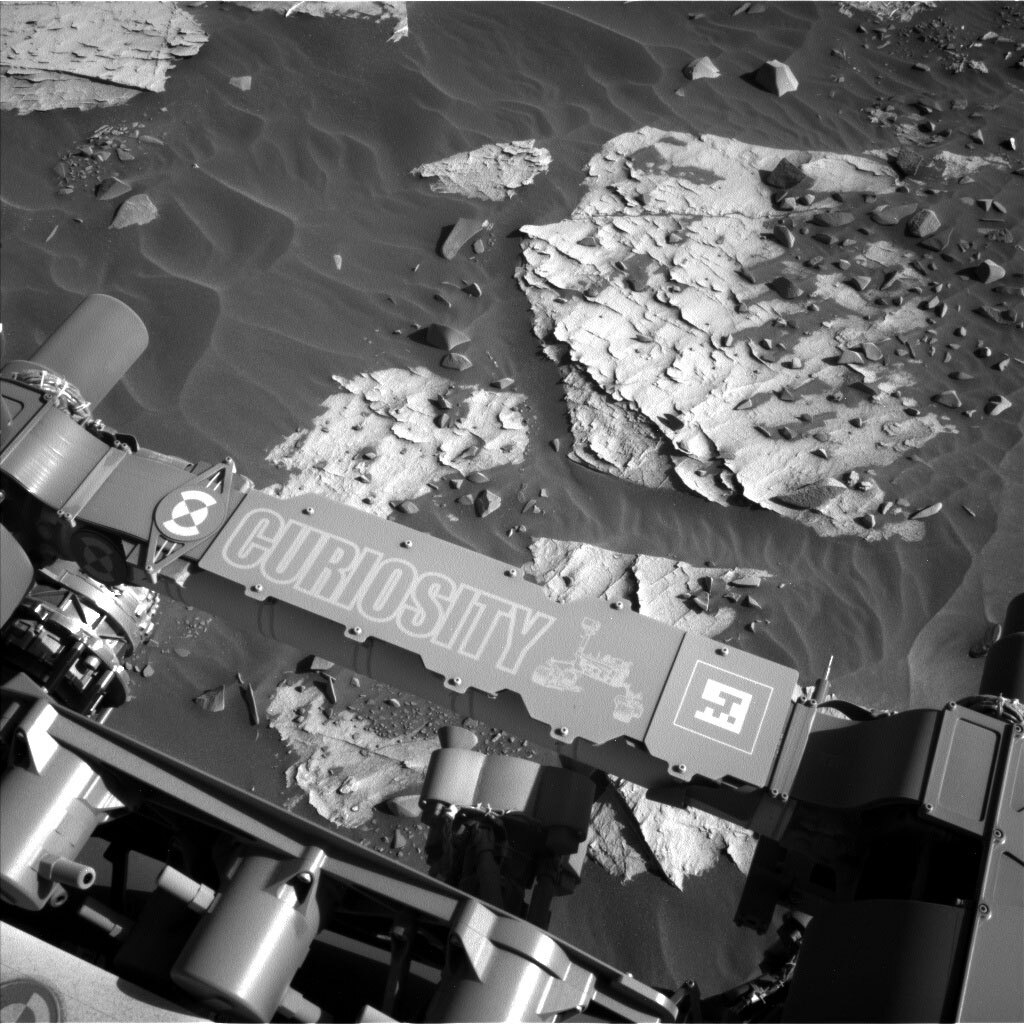November 15, 2021
Sols 3299-3300: Still Lots To Do at the Zechstein Drill Locale

Image of the Zechstein drill hole wall and tailings around the drill hole taken by Chemistry & Camera (ChemCam) onboard NASA's Mars rover Curiosity on Sol 3292. Credits: NASA/JPL-Caltech/LANL. Download image ›
We are in the midst of the Zechstein drilling campaign. The SAM team are eagerly waiting for the results of their weekend EGA analysis on the drilled sample. Depending on the results, we might move onto characterizing the dumped sample with our contact science instruments and ChemCam in the next plan. Anticipating the return to contact science within the next few days, Mastcam will take an image of the tailings around the Zechstein drill hole in today’s plan. This change detection image will be used to determine the shape of the tailings, to see if they have been moved around by wind or by the ChemCam LIBS measurement of the drill hole wall on sol 3292 (shown in the above image). I was the APXS planner today, so it was a pretty quiet day for me, but APXS and the other contact science teams are looking forward to getting to work on these samples!
In the meantime, we continue to characterize the local bedrock with ChemCam and Mastcam. ChemCam is using the LIBS instrument to analyze two targets. One (“Aberlemmo”) is on some obviously layered bedrock, the second (”Caledonite”) is on a nearby fragment of bedrock but layering is less prominent. ChemCam will conduct a paired experiment, so that we can potentially determine if the layering has an associated compositional factor. Mastcam will image these targets and a third layered target (“Balmashanna”) in the same part of the workspace. Finally, the hardworking ChemCam and Mastcam instruments will do some long distance imaging of the overlying Greenheugh pediment, looking at the contact between the pediment and underlying rocks.
The environmental theme group continue their campaign to document environmental conditions in Gale crater, with tau observations (measuring dust in the atmosphere), cloud surveys and dust devil movies (hoping to catch one in action!)


